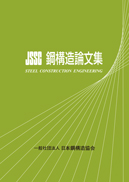Volume 23, Issue 89
Displaying 1-9 of 9 articles from this issue
- |<
- <
- 1
- >
- >|
-
2016 Volume 23 Issue 89 Pages 89_1-89_13
Published: March 25, 2016
Released on J-STAGE: March 22, 2017
Download PDF (1581K) -
2016 Volume 23 Issue 89 Pages 89_15-89_22
Published: March 25, 2016
Released on J-STAGE: March 22, 2017
Download PDF (5429K) -
2016 Volume 23 Issue 89 Pages 89_23-89_35
Published: March 25, 2016
Released on J-STAGE: March 22, 2017
Download PDF (1948K) -
2016 Volume 23 Issue 89 Pages 89_37-89_49
Published: March 25, 2016
Released on J-STAGE: March 22, 2017
Download PDF (4902K) -
2016 Volume 23 Issue 89 Pages 89_51-89_58
Published: March 25, 2016
Released on J-STAGE: March 22, 2017
Download PDF (1294K) -
2016 Volume 23 Issue 89 Pages 89_59-89_71
Published: March 25, 2016
Released on J-STAGE: March 22, 2017
Download PDF (1494K) -
2016 Volume 23 Issue 89 Pages 89_73-89_83
Published: March 25, 2016
Released on J-STAGE: March 22, 2017
Download PDF (2667K) -
2016 Volume 23 Issue 89 Pages 89_85-89_95
Published: March 25, 2016
Released on J-STAGE: March 22, 2017
Download PDF (6847K) -
2016 Volume 23 Issue 89 Pages 89_97-89_110
Published: March 25, 2016
Released on J-STAGE: March 22, 2017
Download PDF (1316K)
- |<
- <
- 1
- >
- >|
